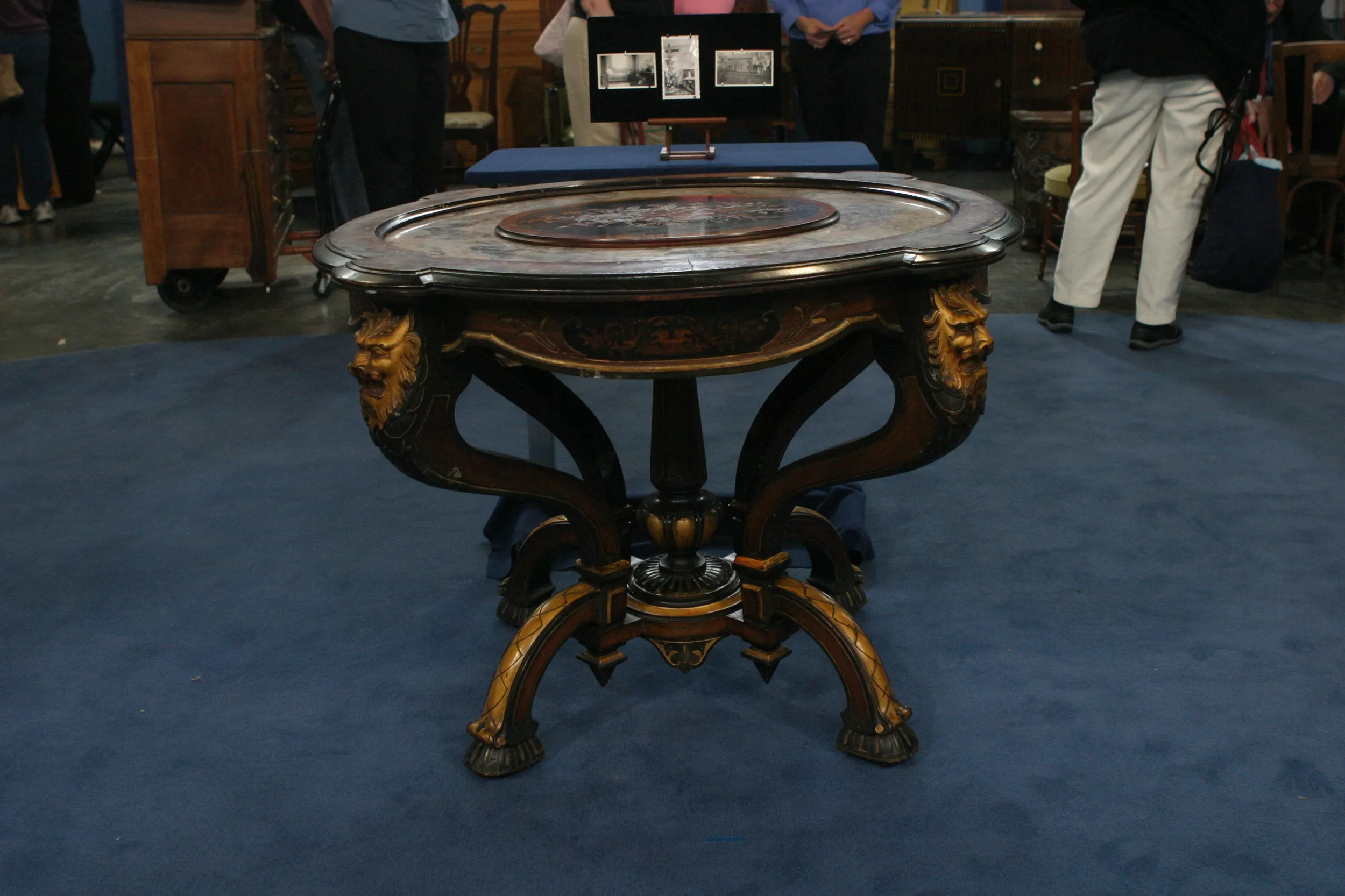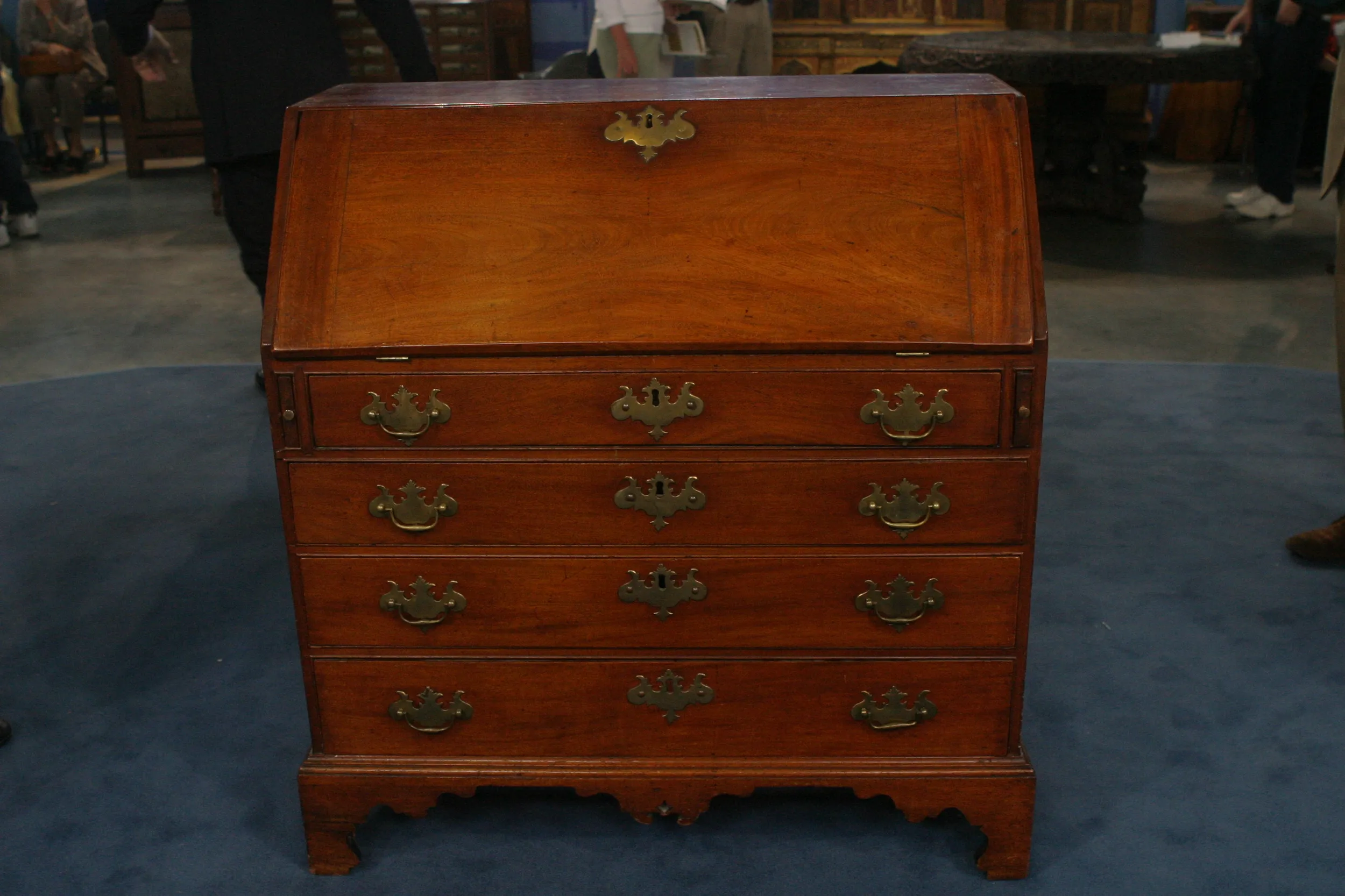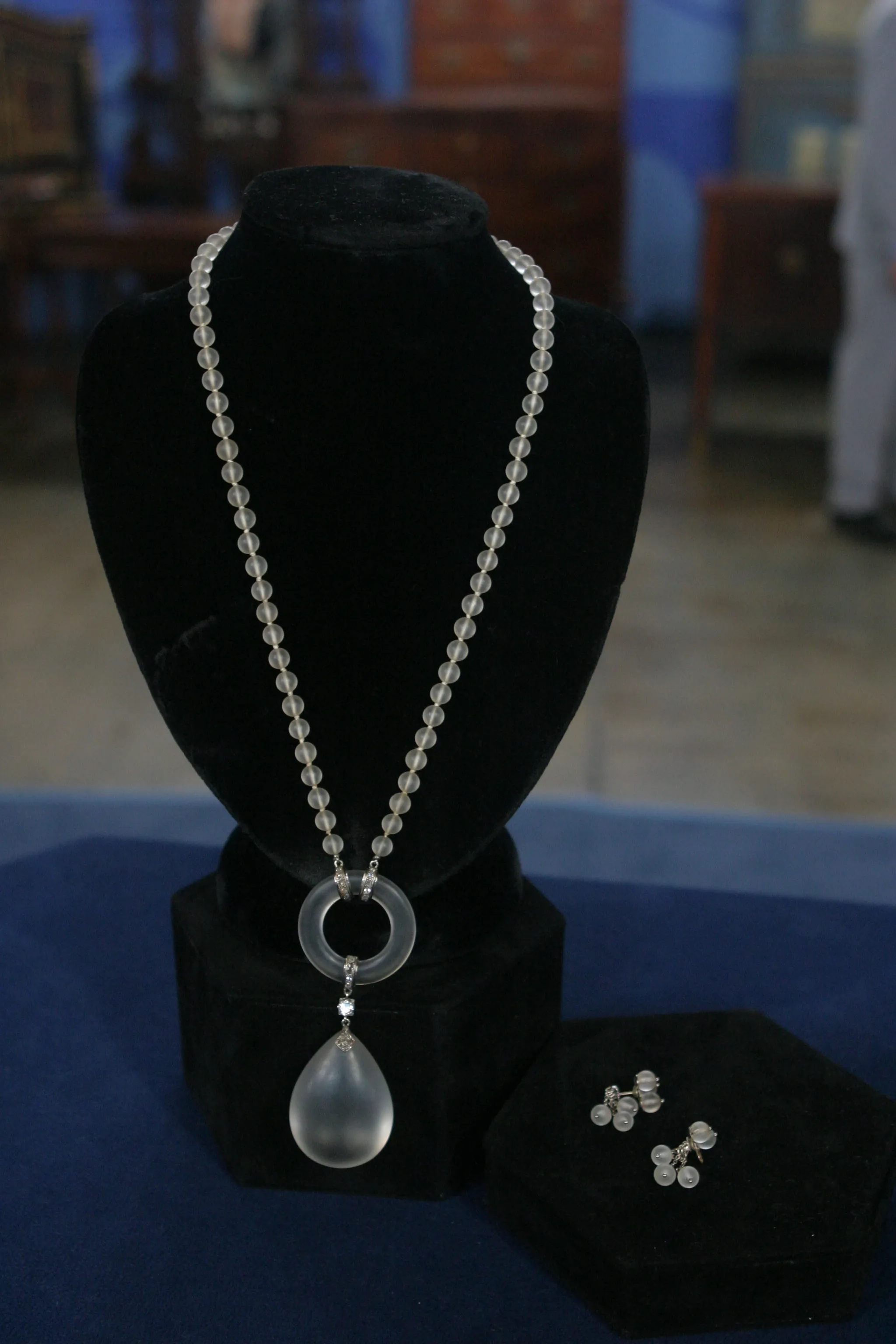GUEST: Well, my mother bought it in 1967 from a local dealer here. And she bought it as a gift to my father. By then, I had graduated and moved. So I completely forgot we had this rug until it showed up on my doorstep, when my brother was going to go to Germany, and he sent it up to me.
APPRAISER: So you never remembered it from the time that she bought it, and never saw it in her house?
GUEST: I never saw it in her house. I saw it in my brother's house once. He had it hanging up on a wall. It was stunning. And I remember the local dealer telling my mother that it was a 16th-century rug. And I found the original sales slip on it, which my brother still has. And it said "Tabriz" on it. So that's the beginning and the end of my knowledge, right there.
APPRAISER: Okay. Well, it's really good that your brother had it hanging on the wall. And I don't think your mother could have used this on the floor, either, because it's in a remarkable state of preservation.
GUEST: No, she didn't. She wouldn't have used it on the floor.
APPRAISER: It is a silk rug. It was sold to her as a Tabriz.
GUEST: Mm-hmm.
APPRAISER: And I think you were told that it was 16th century...
GUEST: Yeah.
APPRAISER: ...further down the road? Well, it's actually something that's woven in the late 19th century.
GUEST: Okay.
APPRAISER: So they were a little bit off in terms of their dating.
GUEST: A little off. Uh-huh.
APPRAISER; And as opposed to it being a Tabriz, it's a Heriz. Now, these are two cities that are close together in Northwest Persia.
GUEST: Okay.
APPRAISER: And their style is very similar; but there are a few things that differentiate a Tabriz from a Heriz. So first, we're talking about a silk rug that's very finely woven.
GUEST: Mm-hmm.
APPRAISER: It probably has upwards of 500 knots per square inch. And one thing that differentiates a Tabriz from a Heriz is that the weave is single-wefted as opposed to double-wefted. Another thing to note about this rug, this rug was woven in the late 19th century, where they had just started to introduce some synthetic dyes that tended to fade.
GUEST: Oh.
APPRAISER: And so this ground color was a much deeper red originally.
GUEST: Was it really?
APPRAISER: Yes, and some of these...
GUEST: Okay.
APPRAISER: Some of these other colors were, were also deeper.
GUEST: Mm-hmm. Well, what's the blue?
APPRAISER: The blue is natural. The blue is indigo.
GUEST: Oh, is it really?
APPRAISER: So that's what gives it the very kind of light feeling that it has, in addition to the fact that the silk reflects the light, and so it makes the rug look lighter. Now, the silk Herizes were amazing in that I don't think that the weaver who made this rug was necessarily weaving from a diagram. And to have a rug this fine being done freehand is extraordinary.
GUEST: Okay.
APPRAISER: One of the things that leads us to this is...
GUEST: Uh-huh.
APPRAISER: ...if you look at the border, the design very gracefully turns the corner in an uninterrupted fashion, and that's what we call a reconciled corner.
GUEST: Mm-hmm.
APPRAISER: If we go up to the top of the rug, we'll notice that the design stops, and then this design goes straight across.
GUEST: Oh, I see, uh-huh.
APPRAISER: And that's called an unreconciled corner. That's usually indicative of a rug that's being done freehand. And also, the naturalistic drawing of
the flowers is special to that Northwest Persian region. Now, you say that she paid $2,700 for it?
GUEST: $2,500. Mm-hmm.
APPRAISER: $2,500 for it. I would say that in today's market, this would have a value of $20,000.
GUEST: She'd be pleased. (laughs)
APPRAISER: She'd be very pleased.
GUEST: She would really be pleased.
APPRAISER: And when we talk about that kind of value, uh, that's basically an auction value.
GUEST: Mm-hmm.
APPRAISER: But it's also a retail value. And the state of preservation of this rug is one of the reasons why the value is as strong as it is.
GUEST: Okay.








